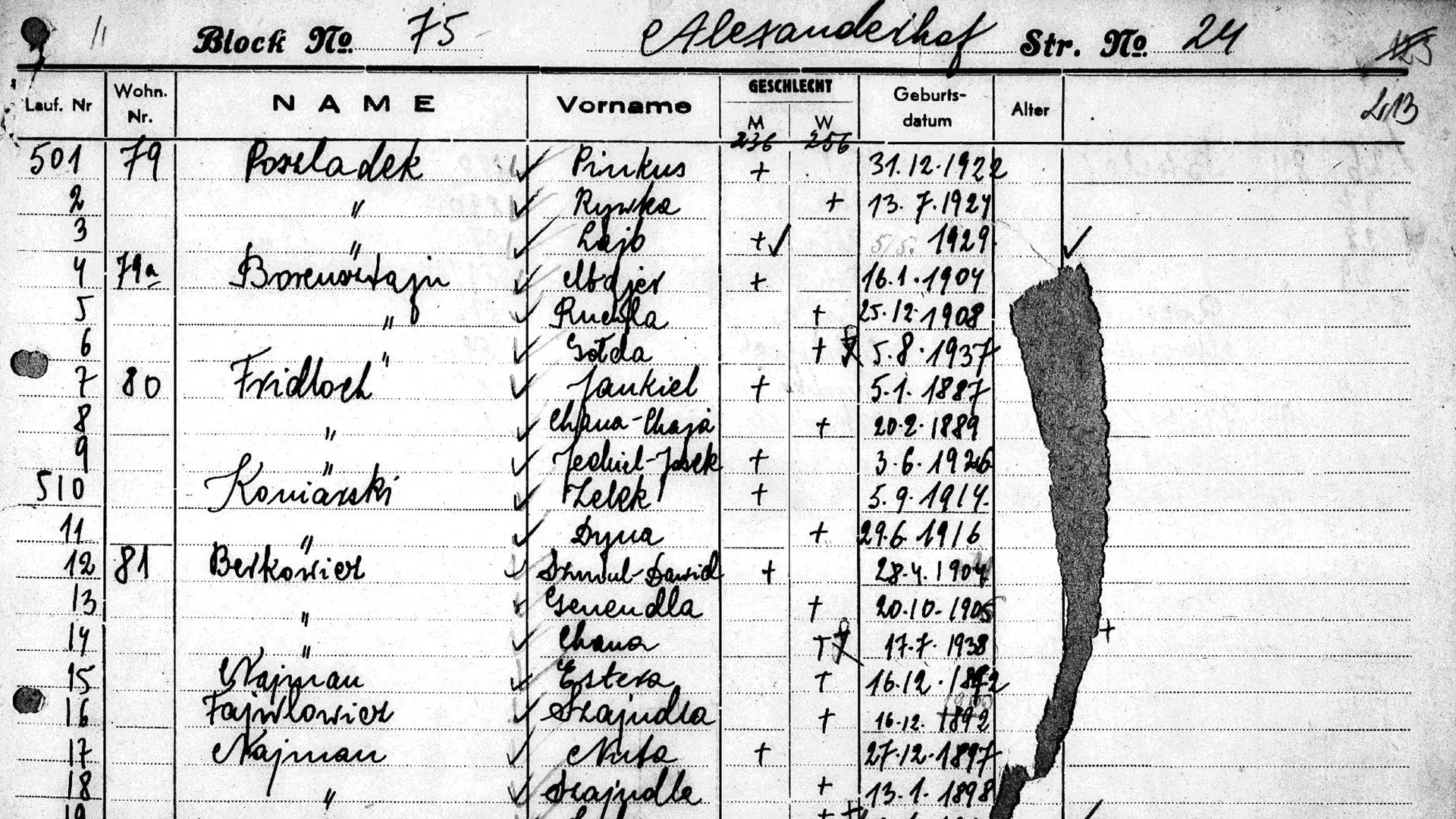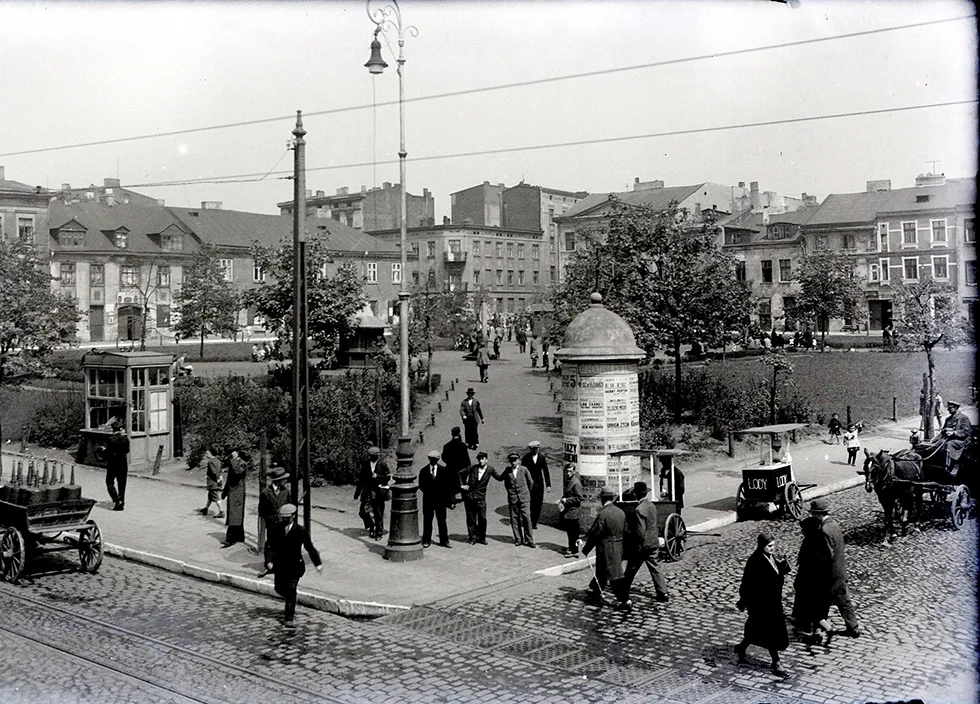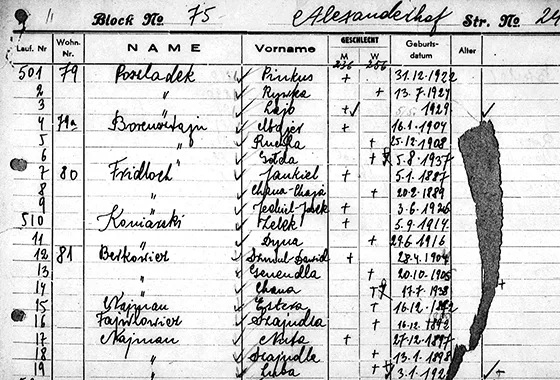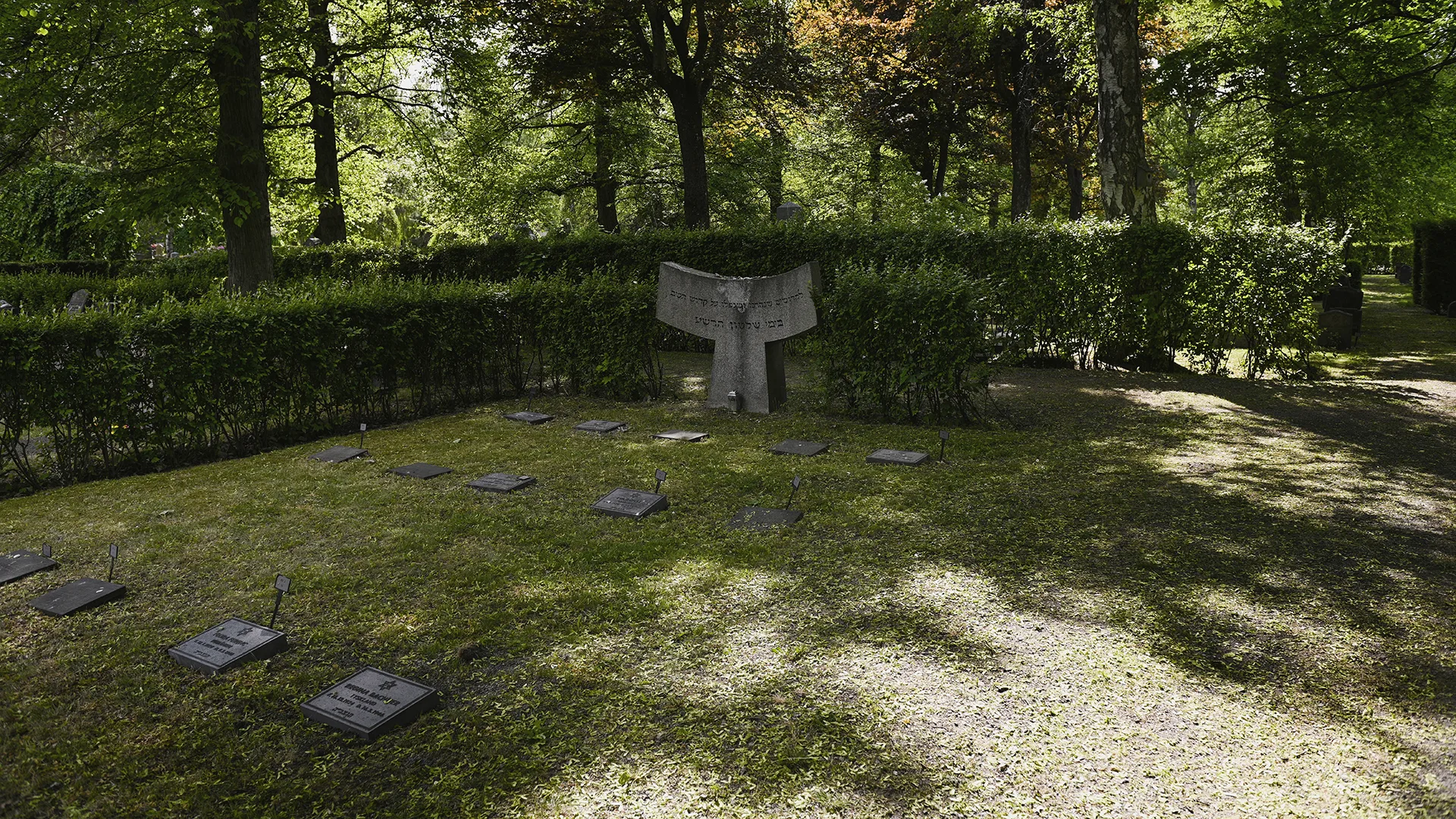The city of Łódź was widely known for its prominent textile industry, which provided work for both her father Szmul and older brother Zelig. In the old, relatively poor and in some parts run-down quarter of Baluty, Rywka lived with her large family in one of the larger apartment buildings on Limanowskiego Street.
Rywka lived with her father Szmul and mother Perla, her little brother Lejb and big brother Pinkus. Her older sister Rachel also lived in the apartment, along with her husband Max and their little daughter Golda. In the neighbouring building, one door down, Rywka's older brother Zelig lived with his wife Masha.
In Łódź, they lived what appeared to be a fairly typical working-class life until the war came in September 1939. Rywka had just turned 14 when Nazi Germany took over the city. Within just a few months, the city's Jews were forced into a ghetto established in her quarter, Bałuty. The Posladek family were among the few Jewish families who were not forced to move on those freezing mornings in January 1940, as they were already living in what became the ghetto.
Every corner of the old and rundown quarter was filled with tens of thousands of Jews. They suffered starvation and cold, while disease spread in the crowded houses. Executions took place openly in the streets, while the ghetto continued to fill up with people from different parts of occupied Europe. Łódź's famous industries were the lifeline of the ghetto, and most of the ghetto's population was forced to work in them. Only those who worked or went to school, like Rywka's younger brother Lejb, were allowed to receive food rations, which were constantly reduced by the Nazis.
Despite the great misery and starvation, life in the ghetto continued on, at least until the afternoon of 5 September 1942. It was then that the Nazis declared a ghetto-wide curfew that lasted for several days. The Nazis went from house to house, apartment to apartment, with lists of the ghetto's inhabitants, selecting anyone they no longer considered fit for work, who they felt could not contribute. On 10 September, the soldiers reached the Posladek family's apartment. Rywka's father Szmul, mother Perla and little brother Lejb were selected. That was the last time she would ever see them.
The apartment list shows that Szmul's, Perla's and Lejb's names had been crossed off. Rywka's parents and little brother – along with thousands of others – were then taken to the Radogoszcz (Radegast) railway station at the northern edge of the ghetto. There they were loaded onto freight cars, which took them to the Chełmno extermination camp, where they were murdered in gas vans. An estimated 180,000 people were murdered in Chełmno. Lejb was 13 years old when the Nazis murdered him and his parents.
Rywka was left with her older brother Pinkus, sister Rachel and niece Golda. Rachel's husband Max had died in the ghetto just a month earlier. Rachel and little Golda escaped the purge in September 1942, but were deported and murdered on Christmas Eve that year. Golda was just five years old. Rywka's older brother Zelig had lost his wife Masha in the ghetto and took his own life in April 1943.
Rywka and Pinkus were left alone and had to continue working in the ghetto to survive. But at the end of April 1944, Pinkus died of tuberculosis. Just four years after the arrival of the Nazis, Rywka was the only member of the large Posladek family who was still alive. She was one of the 70,000 people left in the ghetto, which at its peak had nearly 210,000 inhabitants. The Soviet success on the Eastern Front and the uprising in the Warsaw Ghetto by the remaining Jews there led the Nazis to decide to empty the Łódź Ghetto and deport its inhabitants in August 1944.
From the same station where their families had been sent to die, Rywka and the other inhabitants were deported in freight cars to the Auschwitz-Birkenau concentration and extermination camp. Upon arrival, the majority were sent directly to the gas chambers, but Rywka passed the selection. She was sent first to the Ravensbrück concentration camp and then on to the Mühlhausen labour camp in central Germany. Mühlhausen was a satellite camp of the large Buchenwald concentration camp, where prisoners were forced to produce parts for fighter planes, including bomb detonators. Finally, in early spring 1945, she was moved to the Bergen-Belsen concentration camp.
Thousands upon thousands of Jews had been transferred to Bergen-Belsen from other concentration camps as the Allied forces came closer and closer. Many of the prisoners had been forced on death marches in the bitter cold of January and February, before those who survived made it to Bergen-Belsen. In the overcrowded and cramped camp, diseases such as dysentery, diphtheria, typhus and tuberculosis spread, killing thousands. Despite the terrible conditions, Rywka had remained relatively healthy until her arrival at Bergen-Belsen, but now became severely ill with fever, diarrhoea and a severe cough.
Liberation and time in Sweden
On 15 April 1945, Bergen-Belsen was liberated by British forces. At the time of liberation, the camp held more than 60,000 prisoners, most of them Jews and most in a terrible state of starvation and disease. Several thousand dead prisoners lay unburied in the camp. Rywka and the other surviving prisoners were moved out of the camp and cared for while the Allied forces tried to register all the survivors. In Rywka's registration card, she is registered under her Polish name Regina.
Rywka was one of more than 9,000 survivors brought to Sweden for medical care through UNRRA transports. It was after a period in the transit camp and Swedish field hospital in Lübeck that Rywka was taken, seriously ill, to Sweden on the S/S Kastelholm on 11 July 1945. The Kastelholm arrived in Stockholm after a four-day journey. Rywka and many of the other seriously ill were immediately transported to the emergency hospital in Sigtuna. She was admitted to the hospital in Sigtuna with bilateral tuberculosis. Initially, her general condition was considered to be good. But as the days passed, her condition deteriorated, with severe breathing difficulties and coughing attacks. At 12:35 on 8 August 1945, Rywka, just 20 years old, died from a severe coughing fit.
Rywka Regina Posladek seemed to be the only member of the Posladek family to survive the ghetto in Łódź, only to die a few months after the end of the war. In her journals from Sigtuna, she states that she has a sister in Russia, but it has not been possible to find any trace of this sister. The family was registered in the Yad Vashem database of Holocaust victims in 1957 by a family friend, Natan Szcigowski.
Rywka's route
The map shows the locations to which Rywka was forcibly transferred or travelled, from her birthplace of Łódź to the Northern Jewish Cemetery. Click on the information symbol to see all the locations, listed in chronological order.
About Rywka Posladek
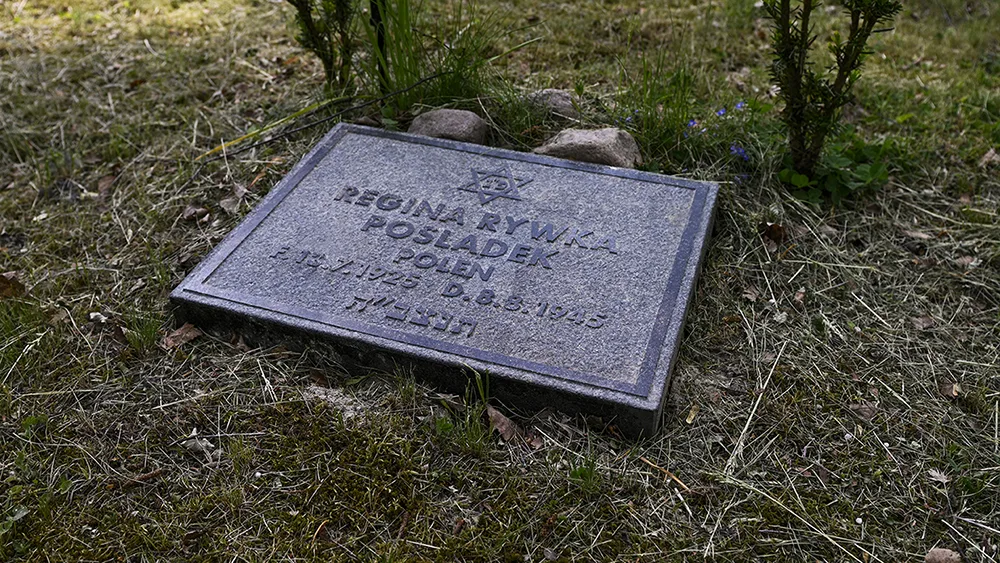
About Rywka's father Szmul Posladek
About Rywka's mother Perla Posladek
About Rywka's sister Rachel Borensztein
About Rywkas brother Zelig Posladek
About Rywka's brother Pinkhas Posladek
About Rywka's brother Lajb Posladek
Learn more about the fates of others here
Here you will find links to the “Förlorade röster” [Lost Voices] collection page as well as links to all the personal texts, listed by surname.
